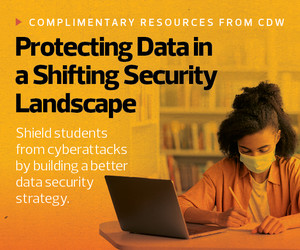As students head back into classrooms this fall, some schools are already using the metaverse for teaching and learning. Yet, according to Jaime Donally, engagement director at Identity Automation and a former EdTech K–12 influencer, the metaverse doesn’t exist — at least, not to its full potential.
“There are elements of the metaverse that are happening, but the metaverse itself is not open-ended like the metaverse will need to be,” Donally says. “Immersive experiences layering augmented reality information have been increasing, but it doesn’t mean that the metaverse exists today.”
As school districts begin to dabble in the metaverse — in its current iteration and into the future — they will need to keep digital identity in mind.
MORE ON EDTECH: Schools are already using the metaverse in education.
What Is Digital Identity?
In a typical online environment, digital identity is the information about a person that exists online. Computers use someone’s digital identity to represent that person.
“We talk about digital identity being the foundation, and really understanding that those are unique online identifiers,” Donally says. “That’s who we are. That’s how we represent ourselves in this virtual space.”
In the metaverse, students’ digital identities will follow them throughout their time in school and beyond, to careers or higher education. It will include important information about them, their learning habits, their skills and accommodations.
Digital Identities Improve Accessibility for Students
One potential benefit of digital identities in the metaverse is that they will allow students’ resources and accommodations to follow them during transitional periods. This means students can retain their digital identities between grade levels, even if they change school districts.
“It’s interoperable,” Donally says. “Our digital identity remains the same, taking that online behavior we have, and it’s not something that has to be repeated or completely siloed.”
RELATED: Why should ed tech users implement interoperability standards?
This means, for example, that a student with dyslexia can receive uninterrupted support throughout their school career because they will easily be identified to educators as having dyslexia.
“I remember waiting over a month for documentation for services for my students because of the time that a piece of paper goes from one campus to the next,” Donally adds. In the metaverse, the transfer of information isn’t slowed by administrative delays.
Click the banner to explore data security resources from CDW for your K–12 school district.
Keeping Students’ Digital Identities Secure
Security can also be improved through the metaverse, which will be necessary to keep students’ digital identities safe. If the metaverse achieves open-world interoperability, managing security will be easier for school districts.
“You’re going to one place to give access or take away or change access for that student, instead of having to go to 15 different accounts, which is impossible,” Donally says. “The goal for innovation should not surpass our need to keep our kids and our community safe.”
This version of the metaverse — complete with digital identities for students, staff and all other users — might still be in the future for school districts, but it will require a thoughtful security approach as it arrives.











